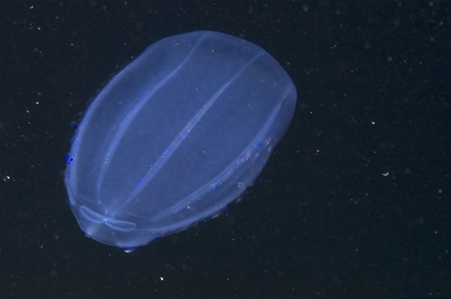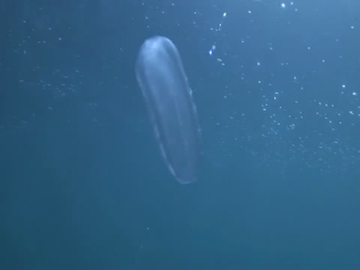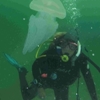General Description
Body sack shape with a wide mouth at one end. No tentacles. Eight rows of hair-like cilia extend from the base to about three-quarters of the way to the mouth. Mature animals are pink. Body up to 15 cm long.
Biology
The rows of hair-like cilia create a rainbow effect as they beat, propelling the animal through the water. These species feed on other jellyfish and are able to engulf equal sized prey whole, or tear pieces off larger prey.
Habitat
Open water, near surface to depths over 3800 m.
Open water
Distribution guide
Worldwide.
Species Group
Jellyfishes and allies › Comb jellies
Depth
Shallow (1-30 m)
Deep ( > 30 m)
Water Column
Max Size
15 cm
Diet
Carnivore
Harmful
Not known to be dangerous to humans.
Commercial Species
No
Global Dispersal
Recorded in Australia
Identify
Conservation Status
- DSE Advisory List : Not listed
- EPBC Act 1999 : Not listed
- IUCN Red List : Not listed





